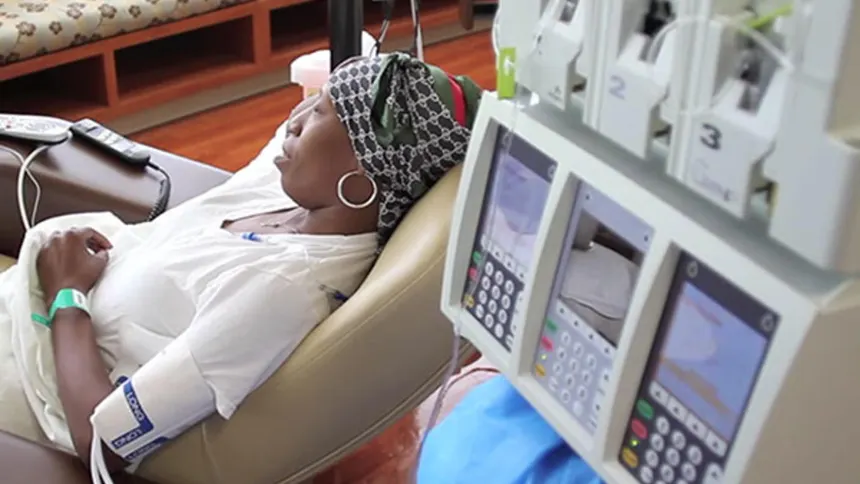Cancer treatment remains one of the most significant health challenges globally, but groundbreaking advancements in treatment and early detection are bringing new hope. Scientists and doctors have made remarkable progress, improving survival rates and enhancing the quality of life for millions. Here’s a closer look at the most recent breakthroughs in cancer treatment and early detection.
1. Early Detection: The Key to Beating Cancer
Detecting cancer at its earliest stages significantly increases the chances of successful treatment. New technologies and medical innovations are revolutionizing early diagnosis.
A. AI-Powered Screening Tools
- Artificial Intelligence (AI) in Diagnostics: AI algorithms can now analyze medical images with greater accuracy than ever before, detecting even the tiniest tumors that doctors might miss.
- Google’s AI Model: A recent study found that Google’s AI model can detect breast cancer in mammograms more accurately than human radiologists.
- Lung Cancer Screening: AI-powered CT scans can now detect lung cancer in its earliest stages, leading to quicker interventions and higher survival rates.

B. Liquid Biopsy: A Game-Changer
- What is a Liquid Biopsy? A simple blood test that detects cancer-related genetic mutations and proteins, making diagnosis faster and less invasive.
- Early Detection Benefits: This technology is being used to detect cancers such as lung, breast, and colon before symptoms even appear.
- FDA Approvals: Several liquid biopsy tests have received FDA approval, making them more accessible to patients worldwide.
C. Wearable Technology for Cancer Detection
- Smartwatches & Biosensors: Devices like the Apple Watch are being explored for cancer detection by monitoring abnormal health patterns.
- Sweat & Saliva Tests: Scientists are developing wearable patches that analyze sweat or saliva for cancer markers in real time.
2. Breakthrough Treatments: A New Hope for Patients
Innovative cancer treatments are improving survival rates and reducing side effects compared to traditional chemotherapy and radiation.
A. Immunotherapy: Training the Immune System to Fight Cancer
- Checkpoint Inhibitors: Drugs like Pembrolizumab (Keytruda) help the immune system recognize and destroy cancer cells.
- CAR-T Cell Therapy: A groundbreaking approach where a patient’s immune cells are genetically modified to attack cancer more effectively.
- Personalized Cancer Vaccines: New vaccines train the immune system to target and destroy specific cancer cells unique to each patient.

B. Targeted Therapy: Precision Medicine in Action
- Genetic Profiling of Tumors: Doctors can now analyze a patient’s tumor at the molecular level and design personalized treatments.
- KRAS Inhibitors: Recently approved drugs are showing promise for patients with previously untreatable lung and colorectal cancers.
- HER2-Positive Breast Cancer: New targeted drugs are improving survival rates for patients with aggressive breast cancer.
C. Nanotechnology in Cancer Treatment
- Nano-Robots: Scientists are developing microscopic robots that can deliver chemotherapy directly to cancer cells, minimizing side effects.
- Gold Nanoparticles: Used in trials to heat and destroy cancer cells without harming healthy tissue.
- Smart Drug Delivery: Nanoparticles help release medication only when they reach cancerous cells, increasing treatment effectiveness.
D. Gene Editing with CRISPR
- CRISPR-Cas9 in Cancer Therapy: Scientists are testing CRISPR technology to edit cancer-related genes and stop tumor growth.
- Early Trials Success: Studies have shown promising results in leukemia and lung cancer patients.
- Future Potential: CRISPR could one day be used to completely prevent certain cancers from developing.
3. Advancements in Radiation Therapy
Traditional radiation therapy often damages healthy tissues, but new innovations are making it more precise and effective.
A. Proton Beam Therapy
- More Accurate than Traditional Radiation: Targets tumors with high precision, reducing damage to surrounding healthy tissues.
- Ideal for Pediatric Patients: Safer for children, as it minimizes long-term side effects.
- Expanding Availability: More hospitals worldwide are offering this treatment due to its proven success.
B. FLASH Radiation Therapy
- Ultra-Fast Radiation Treatment: Delivers radiation in less than a second, reducing damage to healthy cells.
- Early Trials Show Promise: Studies suggest it can be as effective as traditional radiation with fewer side effects.

4. Alternative & Holistic Approaches in Cancer Care
Alongside conventional treatments, researchers are exploring alternative therapies to support overall well-being and recovery.
A. Nutrition & Cancer
- Anti-Cancer Diets: Diets rich in antioxidants, such as the Mediterranean diet, are linked to lower cancer risks.
- Fasting & Chemotherapy: Studies suggest intermittent fasting can make chemotherapy more effective by weakening cancer cells.
B. Mind-Body Therapies
- Meditation & Stress Reduction: Programs like mindfulness meditation are helping patients manage stress and improve treatment outcomes.
- Acupuncture & Pain Management: Proven to help alleviate pain and nausea caused by cancer treatments.
C. Cannabis-Based Treatments
- Medical Marijuana for Pain Relief: Widely used to help cancer patients manage pain, nausea, and appetite loss.
- CBD & Cancer Research: Some studies suggest CBD may have anti-tumor properties, but more research is needed.
5. The Future of Cancer Treatment: What’s Next?
A. AI & Machine Learning in Drug Discovery
- Faster Drug Development: AI is helping scientists discover new cancer drugs in a fraction of the time it used to take.
- Virtual Clinical Trials: AI-powered simulations are reducing the need for lengthy and expensive human trials.
B. Personalized Medicine for Every Patient
- DNA-Based Treatment Plans: Future treatments may be entirely personalized based on a patient’s genetic makeup.
- Cancer Prevention Strategies: Genetic screening could help at-risk individuals take preventive action before cancer develops.
**C. Universal Canc
How Subscription Services Are Reshaping Consumer Spending Habits






